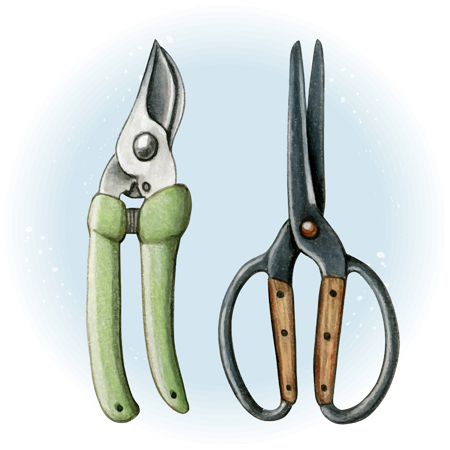Salvia Small Talk: Deadheading Versus Pruning Sages

Deadheading is a gardening term that sounds grim but refers to light pruning — or trimming — of withered flowers during the growing season. It makes ornamentals, like Salvias, look tidy and encourages repeat bloom. In contrast, pruning is a heavier shearing that usually occurs at the beginning and end of the growing season.
Of course, there is no one-size-fits-all approach to either of these processes, especially for the worldwide Salvia genus. It contains about 1,000 species, not all of which are deadheaded or pruned in the same way.
Deadheading and pruning of Salvias depends on their forms of growth, which are divided into four categories:
- Rosette-growing herbaceous perennials
- Soft-stemmed deciduous or semi-evergreen sages
- Deciduous, woody-stemmed sages, and
- Evergreen shrubs.
If you are new to Salvia gardening and compare the pruning information for the four categories, you’ll discover some surprises. For example, consider rosette-growing herbaceous sages — the kind that die to ground in winter and which include popular meadow sages. Deadheading them during the growing season can be just as heavy as pruning at beginning or end of season. Also, with care to avoid periods of flowering, the woody stems of evergreen shrub sages can be pruned almost year-round.
Our online nursery catalog of Flowers by the Sea Farm includes plant description pages for every Salvia we grow. Each page identifies which growth type the plant fits into and includes basic guidelines for deadheading and pruning based on that category. To access this information, click on the “How to Prune this Plant” button.
A Deadheading Series
This is the first article in a series clarifying how to deadhead the various Salvias grown at FBTS. We want to help you have a garden that flowers bountifully, and deadheading is an important practice in achieving that goal. Please feel free to contact us If you have more questions about growing a beautiful Salvia garden.

1 Comments